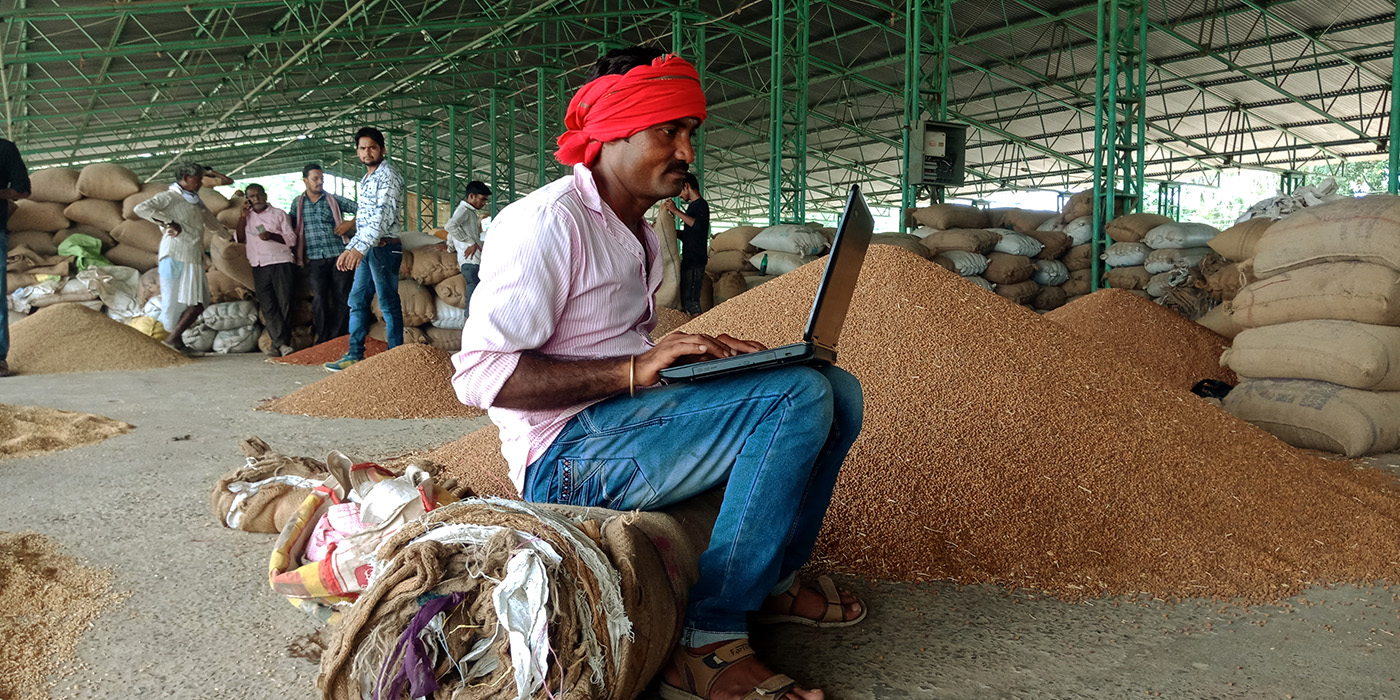
Surveillance and the pervasive presence of “big data” are foregone conclusions in this tech-saturated, consumer-driven world. But what happens when big data informs not only what people buy, but how they organize their communities and indeed their very survival?
A new analysis by Glenn Stone, professor of anthropology and of environmental studies in Arts & Sciences at Washington University in St. Louis, examines how digital technologies are beginning to make inroads into agriculture in lower-income countries in Asia, Africa and Latin America.
“Because so many people — especially in the U.S. — welcome new agricultural technologies as ‘improvements,’ it is no surprise that when people hear about precision agriculture, they assume it is entirely beneficial,” said Stone, who researches the social and political implications of developments in agricultural systems. “Of course, we all initially greeted the technologies of surveillance capitalism — social media, search engines, the Internet of Things — as entirely beneficial, too, but scholars are now pointing out how personally intrusive and profoundly manipulative these technological regimes are.”
In a new article in the Journal of Agrarian Change, Stone identifies a range of mostly data-based technologies in the so-called precision agriculture toolkit, including detailed soil mapping; “variable rate application” control of seeding, fertilizing, irrigating and spraying; automatic machine guidance; and autonomous vehicles, among others. It is a rapidly expanding field.

For commercial, industrialized, high-tech Western farmers, these new developments will not lead to major changes; they will be just another update. Small “peasant” farmers, however — the farmers who cultivate 50-75% of global calories, Stone notes — might face a shocking paradigm shift: a complete upheaval in lifestyle, subsistence and community.
Social organization, said Stone, is the hinge point. “Most people tend to think of farmers as highly independent operators, but in peasant societies, agriculture is surprisingly social. Farmers interact with each other not only in managing labor and local resources, but in the ongoing process of figuring out how to farm. They exchange ideas, information and opinions, observing each other’s fields and emulating their neighbors.”
And some tenets of precision agriculture are antithetical to that agrarian model.
“It is highly individualized,” Stone said. “The information flow is directly between the individual farmer and the algorithms on the other end of the monitors. This has the potential to not only remove farmers from the local circuits of information but to create new dependencies on external commercial services.”
The information flow is directly between the individual farmer and the algorithms on the other end of the monitors.
Stone argues that these dependencies, often hailed as evidence of technical improvement, are better understood as a condition of “deskilled” farming with weakened indigenous agricultural knowledge and capacity.
“Hybrid corn is a good example,” Stone said. While hybrid seeds increased yield, Stone argues that their benefit has been overstated, with non-hybrid yields simultaneously increasing at a greater rate.
“Hybrid corn has been saluted as a huge step forward for farming, but it left farmers dependent on outsiders (with their own vested interests) to choose their seeds,” he said. “Hybrid corn companies managed to force public breeders to keep the parent lines secret, hurting the farmers’ ability to make their own hybrids or make informed choices.”
Under a big data regime, farmers are at risk of becoming dependent on technology for decision-making. They may be steered away from traditional systems based on risk management, instead encouraged to pursue profit-oriented, market-driven approaches. They are also directed to purchase artificial fertilizers, seeds and equipment, often sold by the same companies who provided agricultural advice in the first place.
These trends erode peasants’ ability to self-manage their communities, becoming beholden to institutions that promote and furnish precision agriculture services, Stone said.
His new paper incorporates years of research on peasant agriculture in Africa, India, the Philippines and North America to predict how they might be affected by these new technologies. Stone received two research grants (from the National Science Foundation and the Social Sciences and Humanities Research Council) to study the ongoing implementation and effects of these new technologies.
“Peasant autonomy means different things to different people,” Stone said. “But to me the key to it is farmers being able to learn and make decisions according to their own interests. That means individual farmers have to be able to collect empirical information on technologies and practices. The social aspects of agriculture have to be able to operate.”


